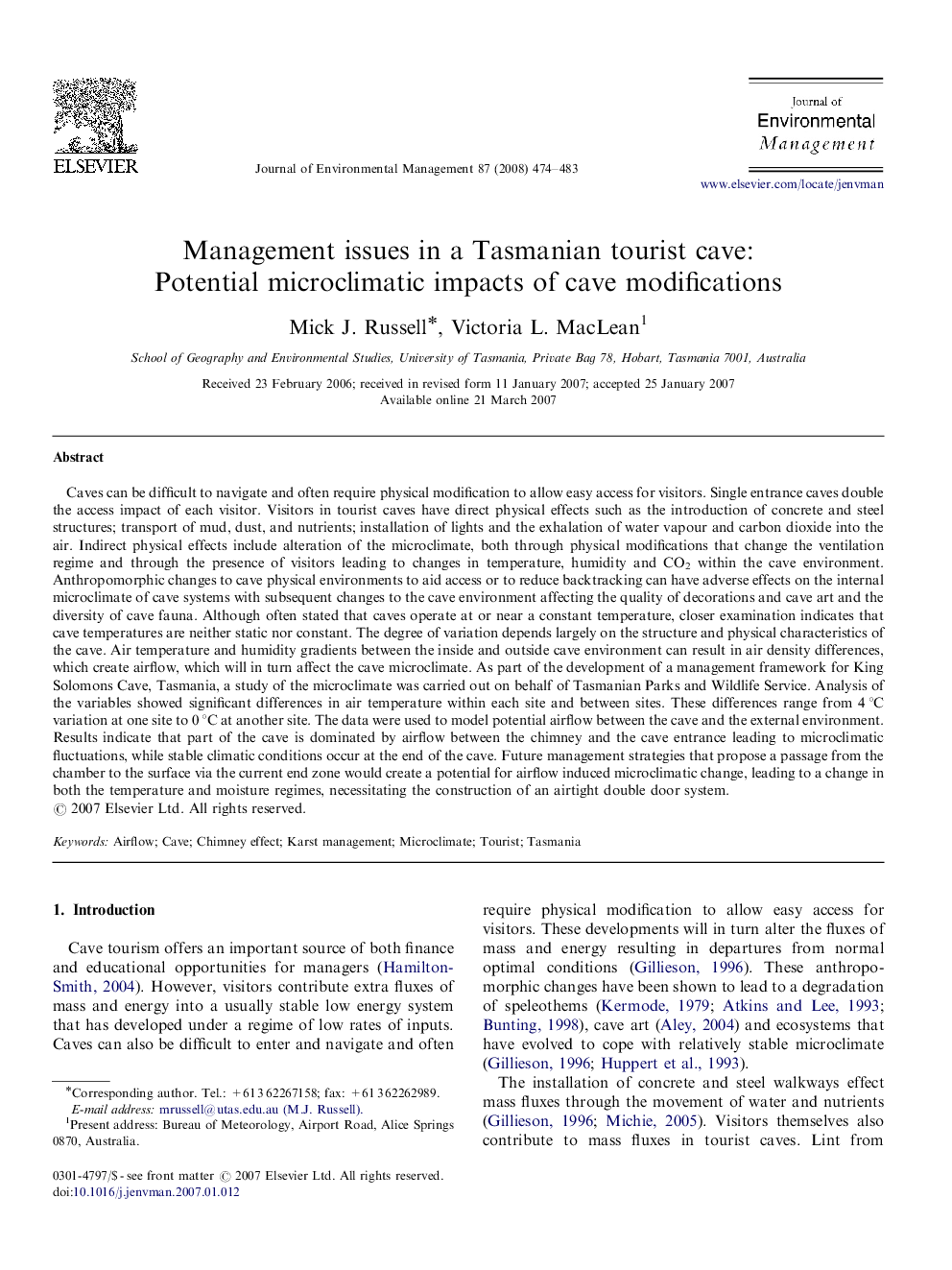| کد مقاله | کد نشریه | سال انتشار | مقاله انگلیسی | نسخه تمام متن |
|---|---|---|---|---|
| 1057607 | 947082 | 2008 | 10 صفحه PDF | دانلود رایگان |

Caves can be difficult to navigate and often require physical modification to allow easy access for visitors. Single entrance caves double the access impact of each visitor. Visitors in tourist caves have direct physical effects such as the introduction of concrete and steel structures; transport of mud, dust, and nutrients; installation of lights and the exhalation of water vapour and carbon dioxide into the air. Indirect physical effects include alteration of the microclimate, both through physical modifications that change the ventilation regime and through the presence of visitors leading to changes in temperature, humidity and CO2 within the cave environment. Anthropomorphic changes to cave physical environments to aid access or to reduce backtracking can have adverse effects on the internal microclimate of cave systems with subsequent changes to the cave environment affecting the quality of decorations and cave art and the diversity of cave fauna. Although often stated that caves operate at or near a constant temperature, closer examination indicates that cave temperatures are neither static nor constant. The degree of variation depends largely on the structure and physical characteristics of the cave. Air temperature and humidity gradients between the inside and outside cave environment can result in air density differences, which create airflow, which will in turn affect the cave microclimate. As part of the development of a management framework for King Solomons Cave, Tasmania, a study of the microclimate was carried out on behalf of Tasmanian Parks and Wildlife Service. Analysis of the variables showed significant differences in air temperature within each site and between sites. These differences range from 4 °C variation at one site to 0 °C at another site. The data were used to model potential airflow between the cave and the external environment. Results indicate that part of the cave is dominated by airflow between the chimney and the cave entrance leading to microclimatic fluctuations, while stable climatic conditions occur at the end of the cave. Future management strategies that propose a passage from the chamber to the surface via the current end zone would create a potential for airflow induced microclimatic change, leading to a change in both the temperature and moisture regimes, necessitating the construction of an airtight double door system.
Journal: Journal of Environmental Management - Volume 87, Issue 3, May 2008, Pages 474–483